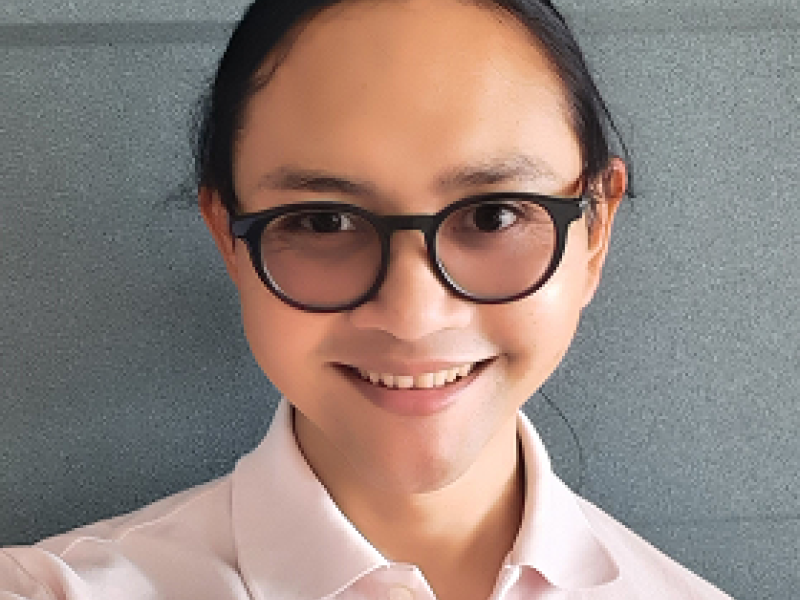Understanding intersectionality will help us ensure the mental health system truly caters for everyone.
This was the message of Ananda Training and Consultancy Director Budi Sudarto, guest speaker at Mind Australia’s third Respect in Action webinar.
The free public webinar series is designed to prompt conversations and address issues that may affect the mental health experiences of people from all backgrounds, ages, and abilities.
Budi (they/he) broke down the topics of positionality, reflexivity, and intersectionality, and how they can be applied to the Australian mental health sector today.
Budi guided the audience through the different elements that can influence approaches to intersectionality by sharing their own experiences of discrimination and marginalisation due to their intersecting marginalities.
Positionality – who we are
Budi started the session by breaking down the concept of positionality.
They explained this as “who we are and where we sit within a systemic power structure”.
To help articulate this, Budi shared the ‘wheel of power/privilege’ graphic - a diagram that depicts a systemic power structure whereby people who are neurotypical, non-disabled and white are placed closer to the centre of power, at the expense of marginalising people who are neurodiverse, disabled, non-white etc. Budi explained that our personal attributes determined where we have been placed within this systemic power hierarchy.
“The closer you are to the centre, the more access you have to the social privileges and opportunities, as well the ability to influence those in power,” Budi said.
“In my experience, for example, for a very long time, I considered myself as a cisgender man, so I was actually closer to power. But I never felt comfortable identifying as a man, and I never really subscribed to the social standards of masculinity, so now I identify as non-binary. This means that on the wheel of privilege, I’m actually moving away from the centre of power towards the outskirts.”
Reflexivity – understanding our privileges and how this can shape perspective
Budi defined reflexivity as the practice of reflecting on our own privileges and recognising how these can give way to unconscious biases in the mental health sector.
Budi said that taking a person centric approach without practicing reflexivity can be dangerous for people on the outskirts of the power hierarchy.
“Practitioners may not be aware of their own biases, stereotypes and prejudices, and may make instant judgements based on factors like skin colour or gender expression,” they said.
Another aspect of reflexivity is acknowledging that the practice of mental health support we experience in Australia has been shaped through a Western lens.
This means we may need to rethink our approach to incorporate a more diverse set of thinking when it comes to mental health, especially when working with people from other ethnic communities.
Intersectionality versus diversity
Budi talked about the importance of distinguishing diversity and intersectionality, and how these different concepts are applied practically.
Intersectionality looks at how multiple marginalised identities overlap and how this effects our understanding of ourselves and the world around us. Multiple marginalisation involves experiencing overlapping and intersecting oppressions based on characteristics such as race, ethnicity, gender identity, sexuality and disability, that can have a compounding impact on mental health and wellbeing.
“Diversity is created by members of the dominant group. It focuses on one specific aspect of marginalised identity as ‘a problem’ and has a tendency to homogenise entire communities as having the same issue or sharing the same attributes,” Budi said.
“Diversity is quite passive, focusing on making sure members of the LGBTQIA+ and ethnic communities fit within the established system, without challenging the status quo or making a systemic change.
“Intersectionality is an active concept. It requires us to constantly reflect and challenge the status quo. It requires us to constantly ask questions: what have we done to make sure that there is a systemic change? What have we done to ensure that people experiencing multiple marginalisation feel safe and included in the services?”
Viewing intersectionality as an opportunity
Budi introduced the concept of ‘positive intersectionality’, whereby intersectionality should not only focus on intersecting marginalities, but also the strengths and opportunity that comes from belonging to multiple, marginalised communities.
“Cherishing and nurturing multiple marginalised intersectional identities allows us to see the uniqueness, positivity and strength that these individuals carry,” they said.
“I can affirm my faith in the Muslim community. I can affirm my ethnicity in the Indonesian community, and I can affirm my sexuality and gender in the LGBTQIA+ community.”
Budi said the end goal should be to reach a point where people are able to affirm all aspects of their identities without feeling that they must sacrifice one in order to accommodate another.
“If we put people with intersecting identities in the centre, everybody benefits from it,” they said.
“To ensure the system is catered for everyone, we have to learn about LGBTQIA+ identities, ethnic diversity, faith diversity, disability, neurodivergence, we have to learn a lot more, and this expands our understanding of the world beyond the status quo.”
If you would like more information about Mind, please contact us via Mind Connect or phone: 1300 286 463.
If this article raises concerns for you, please call Lifeline on 13 11 14. Aboriginal and Torres Straits Islanders can also call 13 YARN (13 92 76) a 24/7 national crisis support telephone service staffed by Aboriginal and Torres Strait Islander peoples.
